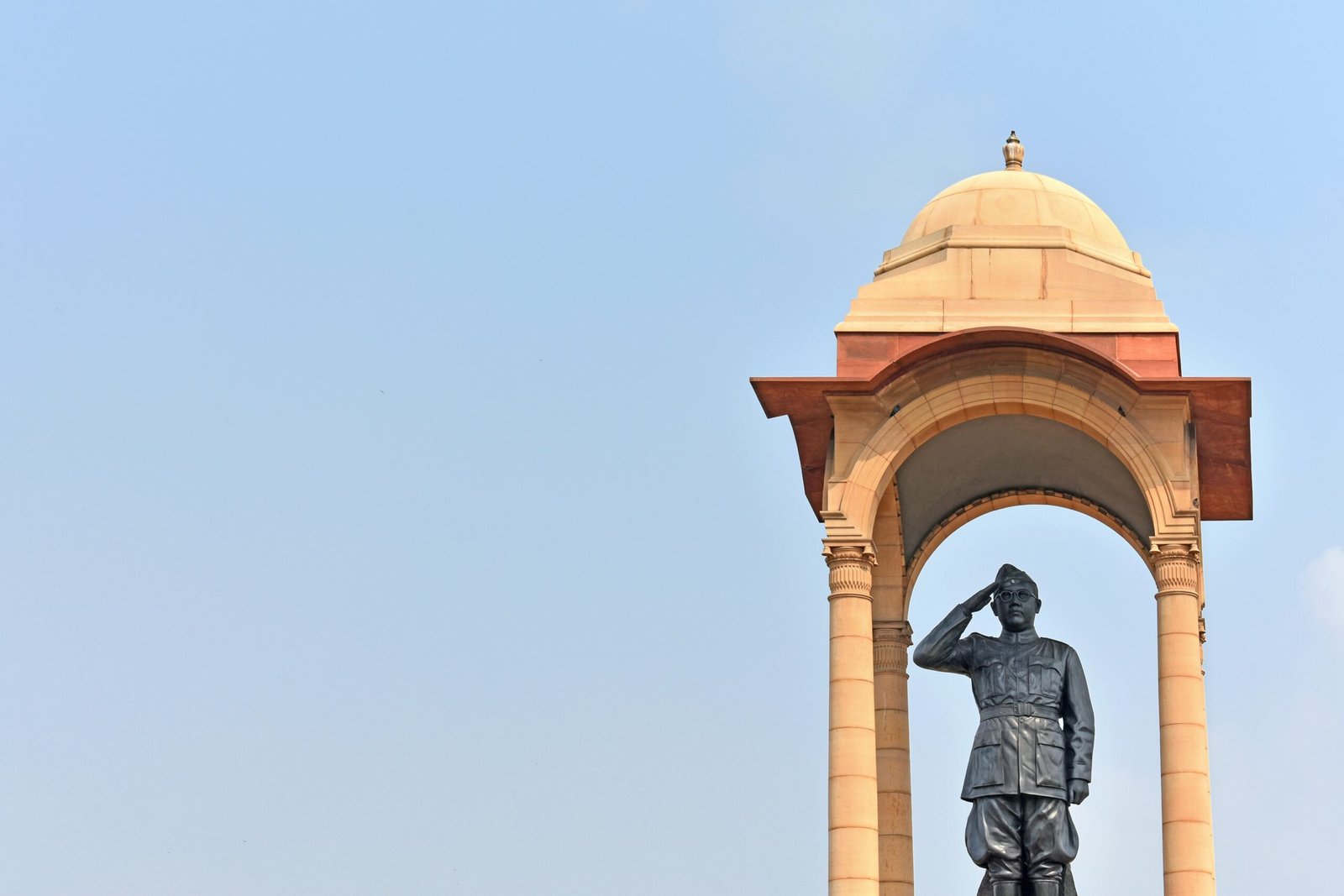Bal Gangadhar Tilak
India’s struggle for independence was shaped by the tireless efforts and sacrifices of numerous freedom fighters who dedicated their lives to the cause. Among these heroes, one name stands out prominently – Bal Gangadhar Tilak. Known as the “Lokmanya” or “Beloved Leader,” Tilak played a crucial role in inspiring and mobilizing the masses against British colonial rule in India.
The Early Years
Born on July 23, 1856, in Ratnagiri, Maharashtra, Bal Gangadhar Tilak was a brilliant scholar, a prolific writer, and a visionary leader. He completed his education in law and became actively involved in the Indian National Congress, which was at the forefront of the freedom movement.
Tilak’s unwavering commitment to the cause of independence led him to establish two influential newspapers, Kesari (in Marathi) and The Maratha (in English). Through these publications, he fearlessly exposed the injustices of British rule and advocated for the rights and welfare of the Indian people.
The Voice of the Nation
Tilak’s powerful writings and speeches resonated with the masses, awakening a sense of national pride and unity. He believed that education was the key to liberation and tirelessly worked towards promoting education among the masses, especially in his home state of Maharashtra.
One of Tilak’s most significant contributions was the concept of “Swaraj,” meaning self-rule or self-governance. He popularized this idea and made it the rallying cry for India’s independence movement. Tilak firmly believed that the path to freedom lay in the hands of the Indian people, and he encouraged them to unite and fight for their rights.
The Birth of Mass Movements
Tilak’s leadership was instrumental in the formation of two important mass movements that shook the foundations of British rule – the Home Rule Movement and the Swadeshi Movement.
The Home Rule Movement, launched in 1916, aimed to establish self-government within the British Empire. Tilak toured the country, delivering powerful speeches and garnering support for the movement. His efforts inspired millions of Indians to demand their right to self-rule.
The Swadeshi Movement, on the other hand, focused on promoting Indian goods and boycotting British products. Tilak believed that economic independence was essential for achieving political freedom. He urged Indians to boycott British goods and instead support Indian industries. This movement not only instilled a sense of self-reliance but also dealt a blow to the economic strength of the British Empire.
The Imprisonment and Legacy
Tilak’s relentless pursuit of freedom did not go unnoticed by the British authorities. He was arrested several times and spent a total of six years in prison. However, even behind bars, Tilak’s spirit remained unbroken. His writings from prison, such as the famous “Gita Rahasya,” continued to inspire and motivate the masses.
Unfortunately, Tilak’s health deteriorated during his last imprisonment, and he passed away on August 1, 1920. However, his legacy lived on, and his teachings and ideals continued to shape the freedom movement.
The Final Words
Bal Gangadhar Tilak was a visionary leader, a fearless journalist, and a true patriot. His unwavering commitment to the cause of India’s independence and his ability to mobilize the masses made him one of the most influential figures in the freedom struggle.
Today, as we celebrate the independence that Tilak and countless other freedom fighters fought for, let us remember their sacrifices and strive to uphold the values they held dear. Bal Gangadhar Tilak’s legacy will forever inspire generations to come, reminding us that the flame of freedom must always burn bright.
FAQ
- Who was Bal Gangadhar Tilak? Bal Gangadhar Tilak, commonly known as Lokmanya Tilak, was a prominent Indian nationalist, social reformer, and freedom fighter during the British colonial rule in India. He was born on July 23, 1856, in Ratnagiri, Maharashtra, and played a significant role in the Indian independence movement.
- What were Tilak’s contributions to the Indian independence movement? Tilak was one of the earliest leaders to advocate for complete independence from British rule, famously coining the slogan “Swaraj is my birthright, and I shall have it.” He emphasized the need for mass agitation and mobilization to achieve freedom and played a crucial role in popularizing the concept of Swadeshi and Boycott movements.
- What was Tilak’s role in the political landscape of India? Tilak was a key figure in the Indian National Congress (INC) during its early years. He advocated for radical approaches to challenge British rule and was a staunch critic of moderate voices within the Congress who favored negotiation and cooperation with the British authorities.
- What was Tilak’s approach to social reform? Alongside his political activities, Tilak worked towards social reform, particularly in the field of education. He emphasized the importance of education for all sections of society and played a significant role in the promotion of national education through initiatives like the Deccan Education Society.
- What was Tilak’s legacy? Tilak’s legacy is that of a fearless patriot and a champion of India’s freedom struggle. His commitment to the cause of independence, along with his efforts in social reform and education, left an indelible mark on the fabric of Indian society. He continues to be revered as one of the foremost leaders of the Indian independence movement.
- How did Tilak’s ideas influence future generations? Tilak’s emphasis on self-reliance, mass mobilization, and cultural pride profoundly influenced subsequent generations of freedom fighters, including Mahatma Gandhi and Subhas Chandra Bose. His vision of a free and self-reliant India inspired countless individuals to actively participate in the struggle for independence.
- Was Tilak involved in any significant events or movements? Yes, Tilak played a pivotal role in various movements and events, including the Swadeshi movement, the Boycott movement, and the Home Rule movement. His leadership and organizational skills were instrumental in galvanizing public support and challenging British authority in India.
- How did Tilak inspire ordinary Indians? Tilak’s fiery speeches, patriotic fervor, and unwavering commitment to the cause of freedom inspired millions of Indians to join the struggle against British rule. He provided a voice to the aspirations of the common people and instilled a sense of pride and unity among them.
- Did Tilak face any challenges or obstacles in his pursuit of independence? Yes, Tilak faced numerous challenges, including persecution by the British authorities. He was imprisoned several times for his nationalist activities and faced suppression of his publications. Despite these challenges, Tilak remained steadfast in his commitment to the cause of Indian independence.
- How is Tilak remembered today? Tilak is remembered as one of India’s greatest freedom fighters and nationalist leaders. His contributions to the independence movement, his advocacy for social reform and education, and his enduring legacy as a symbol of courage and resilience continue to inspire generations of Indians. Numerous statues, institutions, and landmarks across India pay homage to his memory and his invaluable contributions to the nation’s history.
बाल गंगाधर तिलक
भारत की स्वतंत्रता की लड़ाई कई महान स्वतंत्रता सेनानियों के अथक प्रयासों और बलिदानों से सजी थी, जिन्होंने अपने जीवन को देश के लिए समर्पित कर दिया। इन नायकों में एक नाम प्रमुख रूप से उभरता है – बाल गंगाधर तिलक। “लोकमान्य” के नाम से प्रसिद्ध तिलक ने ब्रिटिश शासन के खिलाफ जनता को जागरूक करने और संगठित करने में महत्वपूर्ण भूमिका निभाई।
प्रारंभिक जीवन
बाल गंगाधर तिलक का जन्म 23 जुलाई 1856 को महाराष्ट्र के रत्नागिरी में हुआ था। वे एक कुशाग्र बुद्धि वाले विद्वान, उत्कृष्ट लेखक और दूरदर्शी नेता थे। उन्होंने कानून की पढ़ाई पूरी की और भारतीय राष्ट्रीय कांग्रेस से जुड़कर स्वतंत्रता संग्राम में सक्रिय भूमिका निभाई।
तिलक ने स्वतंत्रता के प्रति अपने दृढ़ संकल्प के तहत ‘केसरी’ (मराठी में) और ‘द मराठा’ (अंग्रेज़ी में) नामक दो प्रभावशाली समाचार पत्र शुरू किए। इन पत्रों के माध्यम से उन्होंने ब्रिटिश शासन की नीतियों की कड़ी आलोचना की और भारतीय जनता के अधिकारों की खुलकर वकालत की।
राष्ट्र की आवाज़
तिलक की ओजस्वी लेखनी और प्रभावशाली भाषणों ने जनता को प्रेरित किया और उनमें राष्ट्रीयता की भावना जागृत की। वे मानते थे कि शिक्षा ही मुक्ति की कुंजी है, और उन्होंने महाराष्ट्र में शिक्षा के प्रसार के लिए बहुत कार्य किया।
तिलक के सबसे महत्वपूर्ण योगदानों में से एक था “स्वराज्य” का विचार – अर्थात् आत्म-शासन। उन्होंने इस विचार को जन-जन तक पहुँचाया और यही स्वतंत्रता संग्राम का प्रमुख नारा बन गया। उनका दृढ़ विश्वास था कि आज़ादी का मार्ग भारतीयों के हाथों में है, और उन्होंने लोगों को एकजुट होकर संघर्ष करने के लिए प्रेरित किया।
जन आंदोलनों की शुरुआत
तिलक के नेतृत्व में दो बड़े जन आंदोलन हुए जिन्होंने ब्रिटिश शासन की नींव हिला दी – होम रूल मूवमेंट और स्वदेशी आंदोलन।
1916 में शुरू हुआ होम रूल आंदोलन ब्रिटिश साम्राज्य के भीतर आत्म-शासन की मांग कर रहा था। तिलक ने पूरे देश में यात्रा कर प्रभावशाली भाषण दिए और जनता का समर्थन जुटाया। उनके प्रयासों ने लाखों भारतीयों को आत्म-शासन की मांग के लिए प्रेरित किया।
वहीं स्वदेशी आंदोलन का उद्देश्य भारतीय वस्तुओं को बढ़ावा देना और ब्रिटिश उत्पादों का बहिष्कार करना था। तिलक का मानना था कि आर्थिक स्वतंत्रता के बिना राजनीतिक स्वतंत्रता अधूरी है। उन्होंने भारतीयों से अपील की कि वे विदेशी वस्तुओं का बहिष्कार करें और स्वदेशी उद्योगों का समर्थन करें।
कारावास और विरासत
तिलक की निर्भीक गतिविधियों के चलते ब्रिटिश सरकार ने उन्हें कई बार गिरफ्तार किया और कुल छह साल तक जेल में रखा। परंतु जेल की दीवारें भी उनके संकल्प को तोड़ न सकीं। जेल में रहते हुए उन्होंने “गीता रहस्य” जैसी प्रसिद्ध रचना की, जो आज भी लोगों को प्रेरणा देती है।
दुर्भाग्यवश, अंतिम कारावास के दौरान तिलक का स्वास्थ्य बिगड़ गया और 1 अगस्त 1920 को उनका निधन हो गया। हालांकि, उनकी विचारधारा और शिक्षाएं स्वतंत्रता आंदोलन की दिशा तय करती रहीं।
अंतिम शब्द
बाल गंगाधर तिलक एक दूरदर्शी नेता, निर्भीक पत्रकार और सच्चे देशभक्त थे। स्वतंत्रता की लड़ाई में उनकी दृढ़ निष्ठा और जनता को संगठित करने की क्षमता ने उन्हें भारतीय इतिहास के महानतम नेताओं में स्थान दिलाया।
आज जब हम स्वतंत्र भारत की उपलब्धियों का जश्न मनाते हैं, तो हमें उन बलिदानों को याद करना चाहिए जो तिलक और अन्य स्वतंत्रता सेनानियों ने दिए। तिलक की विरासत आने वाली पीढ़ियों को यह याद दिलाती रहेगी कि स्वतंत्रता की ज्योति कभी बुझनी नहीं चाहिए।
अक्सर पूछे जाने वाले प्रश्न (FAQ)
1. बाल गंगाधर तिलक कौन थे?
बाल गंगाधर तिलक, जिन्हें “लोकमान्य तिलक” के नाम से जाना जाता है, ब्रिटिश शासन के दौरान एक प्रमुख भारतीय राष्ट्रवादी, समाज सुधारक और स्वतंत्रता सेनानी थे। उनका जन्म 23 जुलाई 1856 को महाराष्ट्र के रत्नागिरी में हुआ था।
2. तिलक का स्वतंत्रता आंदोलन में क्या योगदान था?
तिलक ने “स्वराज मेरा जन्मसिद्ध अधिकार है और मैं इसे लेकर रहूंगा” जैसे नारों के माध्यम से पूर्ण स्वतंत्रता की मांग की। उन्होंने जन आंदोलन और बहिष्कार आंदोलन को बढ़ावा दिया और स्वदेशी भावना को जन-जन तक पहुँचाया।
3. भारतीय राजनीति में तिलक की क्या भूमिका थी?
तिलक भारतीय राष्ट्रीय कांग्रेस के प्रमुख नेता थे। वे कांग्रेस के नरमपंथी नेताओं के विपरीत उग्र दृष्टिकोण के पक्षधर थे और ब्रिटिश शासन का तीव्र विरोध करते थे।
4. तिलक का सामाजिक सुधारों के प्रति क्या दृष्टिकोण था?
राजनीतिक कार्यों के साथ-साथ तिलक शिक्षा के क्षेत्र में भी सुधार लाने के लिए प्रयासरत रहे। उन्होंने डेक्कन एजुकेशन सोसाइटी जैसी संस्थाओं के माध्यम से राष्ट्रीय शिक्षा को बढ़ावा दिया।
5. तिलक की विरासत क्या है?
तिलक को एक निर्भीक देशभक्त और भारत के स्वतंत्रता संग्राम के मार्गदर्शक के रूप में याद किया जाता है। उनका शिक्षा, समाज सुधार और स्वतंत्रता आंदोलन में योगदान अमिट है।
6. तिलक के विचारों ने भावी पीढ़ियों को कैसे प्रभावित किया?
तिलक के आत्मनिर्भरता, जनसंगठन और सांस्कृतिक गर्व के विचारों ने गांधी जी और सुभाष चंद्र बोस जैसे नेताओं को भी प्रभावित किया। उनके विचारों ने स्वतंत्रता संग्राम को नई दिशा दी।
7. क्या तिलक किसी प्रमुख आंदोलन से जुड़े थे?
हाँ, तिलक स्वदेशी आंदोलन, बहिष्कार आंदोलन और होम रूल आंदोलन जैसे कई प्रमुख आंदोलनों में महत्वपूर्ण भूमिका में रहे। उनकी नेतृत्व क्षमता ने लोगों को संगठित किया।
8. तिलक ने आम जनता को कैसे प्रेरित किया?
तिलक के जोशीले भाषण, देशभक्ति और निडरता ने लाखों भारतीयों को स्वतंत्रता संग्राम से जोड़ दिया। उन्होंने जनता में आत्मगौरव और एकता की भावना को जाग्रत किया।
9. क्या तिलक को स्वतंत्रता की राह में कोई कठिनाइयाँ आईं?
हाँ, तिलक को ब्रिटिश सरकार ने कई बार गिरफ्तार किया। उनके समाचार पत्रों पर प्रतिबंध लगाया गया, फिर भी उन्होंने हार नहीं मानी और संघर्ष जारी रखा।
10. आज तिलक को कैसे याद किया जाता है?
तिलक को आज भी भारत के महानतम स्वतंत्रता सेनानियों में गिना जाता है। देश भर में उनके नाम पर अनेक प्रतिमाएं, संस्थान और स्मारक बने हैं जो उनकी स्मृति और योगदान का सम्मान करते हैं।



Subhash Chandra Bose: A Fearless Freedom Fighter Who Ignited the Flame of Independence
[…] For more inspiring stories of freedom fighters and their contributions to India’s independence, stay tuned to our blog! […]